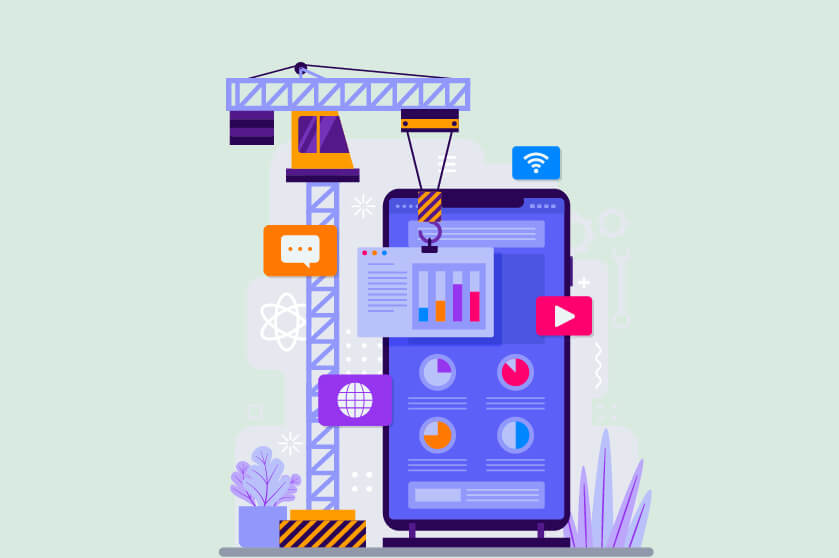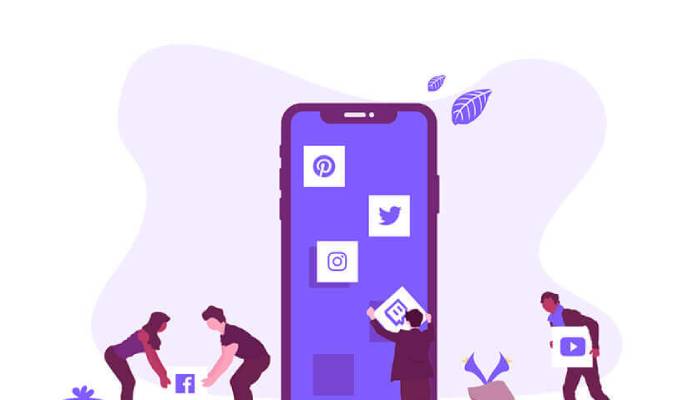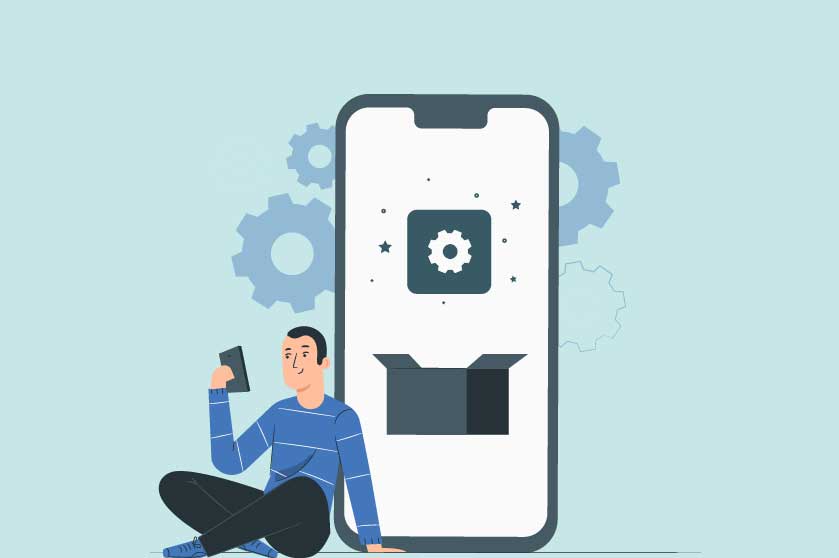
- 28December
- Journey of iOS Evolution
- Blockchain
Since its stepping the first step in the IT industry in the past decade n 2007, the iOS development has maintain a glorious history along with a ravishing presence in the present scenario and also hold a lot of amazingness for the future. If you never know anything about the praiseful history of it, then this blog post is a must go through for you. As here are elaborating every single thing about the iOS since its first declaration, to the announcements, launch, and updation of every version since 2007 to the present date.
Instead iOS, its known as OS X prior
Literally, iOS had started its life with the name as OS X. At the time of its very first announcement, Apple promoted that it ran on a similar Unix center as Mac OS X and that it utilized a large number of similar tools. Nevertheless, it was clear and that there might be some common components among OS X and this new phone OS, it was an alternate enough monster to warrant its own marking. At the point when the first iPhone was landed, the OS was classified "iPhone OS" and it saved that name for a very long time, simply changing to iOS with the arrival of iOS 4 in June of 2010. For straightforwardness (and on the grounds that it's a significantly less off-kilter state), I'm going to describe a little history here and allude to all adaptations of the working framework as "iOS" in this blog piece.
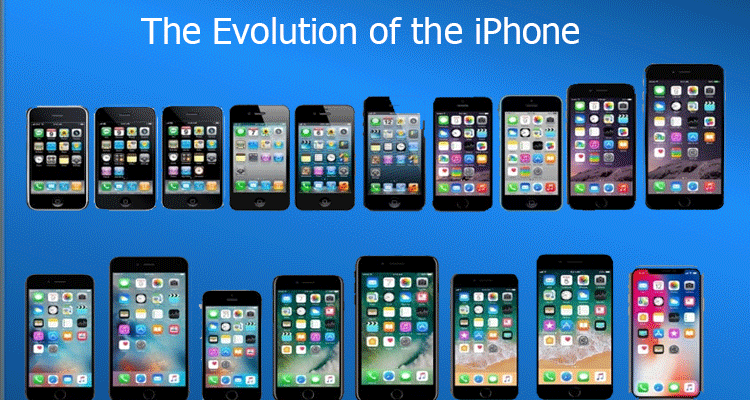
iOS 1: The birth of iPhone
It’s actually an unimaginable fact as per the present going scenario of iOS, as when the first iPhone was presented, it was in reality well behind the opposition when it went to an exacting feature by-include correlation. Windows Mobile, Palm OS, Symbian, and even BlackBerry were totally settled frameworks in 2007, with a wide and profound cluster of features. Similarly, the iPhone didn't uphold 3G, it didn't uphold performing various tasks, it didn't uphold outsider applications, you were unable to duplicate or glue text, you were unable to connect self-assertive records to messages, it didn't uphold MMS, it didn't uphold Exchange push email, it didn't have an adjustable home screen, it didn't uphold tying, it covered up the file system from clients, it didn't uphold altering Office archives, it didn't uphold voice dialing, and it was on the whole secured to programmers and engineers.
There is a huge list of missing features in the first most version of iOS, as comparison to the latest version. Still, with holding a huge list of missing features, the iOS 1 was finely inherited with lots of amazingness as:
The core iOS UI
Until iOS, phones either didn't have a touchscreen or used a resistive touchscreen and a pointer. The iPhone changed that with its capacitive touchscreen, anyway more essentially Apple carefully consolidated that new gear capacity to another customer correspondence model that was at the same time not so much troublesome but rather more momentous than systems that had gone before it. Disposing of all genuine button save 5, Apple made touch the basic communication model. Apple also nearly finished crush to-zoom and inertial hoping to make applications feel more trademark and brief. The speed and "straightforwardness" in iOS 1.0 stunning at that time and also will remain amazing lifelong.
Mobile Safari internet browser
Those new signals made their mark on the Safari internet browser for iOS. It was, as Jobs himself boasted when uncovering it, in a real sense a long time in front of the competition. Indeed, it broadly has never support the Flash module, yet it was the principal mobile internet browser that felt close to as able and power worthy as a complete desktop browser.
A widescreen iPod
Mac utilized its generally huge iTunes and iPod environment to give an "anchor" for the OS and the beginnings of what might in the end turn into a colossal biological system of music, films, TV, books, and applications.
Google Maps
Google Maps was amazingly preferable on the iPhone over it had been on some other stage. Apple completely used the new squeeze to-zoom usefulness to cause the application to feel smooth and speedy, however more critically it felt more instinctive and common to use than even work area planning programming.
Messaging
Visual phone message was a shrewd stunt that permitted clients to bounce straightforwardly to any phone message without enduring interminable voice prompts.
iTunes
iTunes Sync is another neglected element today. Anyone who has battled with Palm's HotSync or Microsoft's ActiveSync can value that straightforward and dependable desktop merging was highly significant.
IOS 1 UPDATES
Just after the three months of the releasing of iOS 1, Apple announced its first significant programming update for the gadget, iOS 1.1.1. It was remarkable for a couple of reasons. To start with, it set up an example of delivering major new forms of iOS simultaneously with new gadgets — for this situation, the first iPod Touch. It additionally settled that Apple would be persistently refreshing iOS with new forms and new highlights and that those product updates would be offered across however much of its iOS product offering as could be expected.
iOS 2: Applications
The App Store
The App Store
Fundamentally, the App Store existed both on the gadget itself and inside iTunes, where clients could undoubtedly peruse and introduce applications. This was a gigantic change from how portable applications were conveyed previously. Essentially over the web or through outsider application stores that were ineffectively incorporated (if by any stretch of the imagination) into the gadget. Similarly as significantly, the App Store utilized Apple's now settled base of iTunes music clients, so clients wouldn't need to reappear their creditcard data to make buyings.
The iOS SDK
The subsequent advancement was just that the iPhone was a powerful device and Apple gave an improvement unit to iOS that offered extraordinary tools for developers. 3D games turned into the standard, and when all is said in done, iOS applications were more utilitarian, better looking, and further developed than on some other stage.
IOS 2 UPDATES
Unluckly, iOS 2.0 was not the most steady of deliveries. Numerous clients experienced more limited battery life, application crashes, and dropped calls, all incident amidst a 2.0.1 and 2.0.2 delivery that had come in genuinely short request. The 2.1 delivery in September of 2008 assisted with alleviating those issues. It fixed a heap of bugs no matter how you look at it on the OS and furthermore added quicker sync with iTunes.
iOS 3: Features
Cut, copy, and paste
With iOS 3.0, Apple presented another content determination allegory that functioned admirably with contact, one territory where a pointer had worked in a way that is better than a finger for fine-grained tapping. Apple's mix of a book amplifying glass and choice sliders was instinctive and, likewise with a considerable lot of its touch-accommodating highlights, ended up being admirably in front of the opposition regarding convenience. Similarly as with a large number of the highlights presented in iOS 3.
Spotlight search
Searching content was turning into a genuinely large errand on iOS, so a framework wide hunt alternative was inescapable. Spotlight permitted clients to go one screen to one side of the principle home screen to get a book box that could look across contacts, messages, schedules, notes, and the iPod.
Push Notifications
Despite the fact that it had really been guaranteed at the iOS 2.0 declaration and didn't show up until 3.0, pop-up messages on Apple's foundation were still route in front of what the competition was advertising. Message pop-ups or the push notification was the option to fill in as such a band-aid for a considerable lot of the capacities stoppage for several appropriate performing various tasks.
IOS 3 UPDATES
A couple of months later since the release, Apple launched iOS 3.1, which added at this point more features, including distant lock, ringtone downloads, Genius blends for music, and voice power over Bluetooth. iOS 3.1.3, which came in February 2010, brought the last OS discharge for the first iPhone 2G and the first iPod Touch: neither would see another OS update.
iOS 3.2: The iPad arrives and the arrival of big screen devices
It’s that time when the technology has decides to introduce the users with something more exciting and as a result, we came to meet the devices with big screen.
New UI paradigms for a larger screen
To carry iOS to the iPad, Apple didn't simply explode the iPhone UI, yet rather added a couple of changes planned explicitly for the bigger screen. The main feature was the expansion to one sider sidebar list that in the left of the screen. Commonly, an application would have a list of substance you could bore down into, at that point return to the list. Apple eliminated that progression by showing the list on the left and the substance on the right, no "back" button needed for most applications.
New application plans and designs
iOS additionally brought a few iPad-explicit changes for a large number of Apple's center iOS applications. Safari got a committed line for bookmarks, Apple added Cover Flow to the App Store, the photos application coordinated pictures into heaps of pictures that could be squeezed out for a sneak-look of the pictures inside, Music got a disentangled, iTunes-like interface with columns of collection craftsmanship, and the settings application got the two-way treatment referenced previously. Basically, local or native applications that would have looked senseless exploded to the iPad's 1024 x 768 screen goal got UI changes for the iPad's bigger screen.
3.2 update
This rendition and two subsequent iOS 3.2 updates were iPad just, incidentally adding only a little fracture to a stage that to date had practically none.
iOS 4: Multitasking
Launched in June2010, iOS 4 was principally about one thing: adding highlighted features for power clients. Performing various tasks, application organizers, Wi-Fi tying, spell-check, tweaked spotlight looking (counting Web and Wikipedia), brought together inbox, and backing for numerous exchange accounts all additional up to an update that aided keep iOS serious with Android, which was starting to at long lasting advances path.
• Local warnings permitted applications to spring up cautions at a set time.
• Task fulfillment permitted applications to complete a transfer or some other restricted tasks when a client left the application.
• Fast application exchanging/saved state permitted applications more effectively to save their current "state" so they would be in a similar spot when a client returned.
• Music applications were currently ready to play out of sight.
• Navigation applications would have the option to keep up their area following, in case, you changed it or come out of the application
• VoIP applications would be permitted to continue running during a functioning call until you changed it or get out of the application.
It was the first time when individuals were introduced with the Video Chat feature:
FaceTime : iOS 4 came close by the iPhone 4 and consequently added an element intended to exploit the device with front camera: FaceTime video visit. Similarly as with numerous iOS highlights throughout the long term, Apple was surely not the first to offer video talk.
Folders : With iOS 4, Apple has finally acquainted folders with the home screen. Its solution was wonderful in that clients essentially needed to move symbols on top of one another to frame folders, a UI development that appears to be basic yet Android has just caught like the pudding on the pizza.
Display : Apple likewise added support system for the iPhone 4's Retina Display and quicker processor, giving designers significantly more approaches to make great application.
Productive features : However iOS 4 actually might not have engaged with the core BlackBerry clients, Apple did at any rate augment its email offering by adding support for numerous Exchange accounts and, basically, a brought together inbox and threaded email messages.
iOS 4 Updates
That was the time when iOS 4 delivered numerous stunning updates as:
iOS 4.0.1 (and iOS 3.2.1 for the iPad) was launched in July of 2010 to address the issue, normalizing the quantity of "bars" showed.
iOS 4.1 assisted Apple with establishing its gaming apps by presenting Game Center, which added some restricted yet painfully required person to person communication to iOS' gaming system.
iOS 4.2.1 brought performing various tasks and folder backing to the iPad, giving iOS a similar form number and features across the entirety of its advanced gadgets (the iPhone 3G and iPod Touch second Gen offered restricted help for iOS 4's features).
iOS 5: Siri the launch of virtual voice assistant
Siri : Accessible just on the iPhone 4S, Siri replaces Voice Control with a virtual assistant that can accomplish something other than associate calls. Siri permits you to ask it queries and give remarks in normal language with snares everywhere on the OS and the web. Siri speaks including your schedule to WolframAlpha. Siri likewise incorporates text transcription, another component for iOS, that functions admirably.
Notification Center :With iOS 5, Apple planned and design something for sort out the torrent of notices coming in to the normal iPhone with Notification Center. Like the manner in which Android works, there is a tenacious draw down cabinet that lists the entirety of your new notifications alongside the capacity to get them out by tapping a small "x" for each application.
iMessage : With iOS 5, Apple has started infringing on some transporter incomes and furthermore the harder BlackBerry Messenger fan base with its own framework for sending short messages.
No PC required : Maybe in particular, Apple eliminated the requirements that iOS gadgets be actually fastened to a PC by means of USB to be actuated.
iCloud :Finally iOS 5 was released alongside another cloud administration to supplant MobileMe, named "iCloud." It is the most recent of a few endeavors to get cloud benefits right and, up until this point, effectively the best. iOS gadgets can be supported up straightforwardly to iCloud, as can records and different documents.
iOS 6: Goodbye, Google Maps
Maps : Google Maps has for quite some time been viewed as the benchmark on the internet, it’s like a service that Apple had authorized since the first iPhone's presentation in 2007. Apple started purchasing organizations (most outstandingly C3 Technologies in 2011) that would help it break liberated from Google's environment. In iOS 6, that works out as intended with a completely renewed Maps application that features turn-by-turn route unexpectedly with the 3D Flyover mode, and Siri coordination.
Facebook Integration : Obviously, with Facebook includes in Siri and Notification Center, that mean just something single: Facebook combination has formally been added to iOS 6, joining Twitter which had been added the year earlier. Flexible new substance sharing all through the stage similar to Android's sharing framework has been added, and Facebook is included conspicuously, which means you can present scores on your Wall from Game Center, transfer photographs, and pull Facebook occasions directly into the iOS schedule, among other touchpoints.
iOS 7: Hello, Jony Ive
When Apple announces the big changes
After the messed up presentation of the Maps application saw Tim Cook post an individual apology sentiment on the Apple landing page, Scott Forstall, who had driven iOS design for quite a long time, headed out in different directions with the organization. Not long after the takeoff, Apple's taken a lead with modern and industrial lead designer, Jony Ive, took administration of the organizations with human interface endeavors.
Control Center : Gotten to with a swipe up from the lower part of your screen, Control Center is Apple's variant of the fast settings flips found on Android devices. The clear overlay offers a single tick admittance to Airplane mode, Wi-Fi, Bluetooth, Do Not Disturb, Rotation lock, and sliders for volume and splendor.
AirDrop : First presented with OS X Mountain Lion, AirDrop is a specially appointed sharing framework that lets you rapidly share pictures, recordings, and different documents with individuals around you.
Unusually, you can't divide documents among iOS and OS X yet, but a possibility could change with the arrival of OS X Mavericks this year.
An application with some animated weather feature, still without any widget. Acquiring vigorously from Yahoo's effective iOS application, the new Weather application highlights rich enlivened foundations that change dependent on season of day and the flow climate conditions. It's a fabulous looking application, yet its dynamic foundations aren't reflected by its symbol, which stays radiant.
The introduction of Automatic updates:
Self-updates :With iOS 7, the times of opening up the App Store to click "update all" are finished. The OS presently offers the choice to refresh all applications on your framework without asking, much like its rivals have accomplished for quite a while. It’s a twofold edged blade: auto-refreshing guarantees that all clients are running the most recent rendition of an application, and yet buyers would not have the option to avoid a carriage application update, regardless of whether it has been broadly detailed.
iOS 8: Opening up
While iOS 7 achieved the greatest visual change to the stage since its beginning, iOS 8 is a refinement of the plan and design iOS 7 set up. This time around, Apple concentrate on extending features sets and improving work processes, while adding a huge load of new apparatuses for designers to give their applications more capacities than any other time.
Durability :The greatest new thing in iOS 8 is that Apple is calling Coherence. iOS 8 works with Apple's new Mac OS X 10.10 Yosemite to give a totally new degree of intuitiveness between an iPhone or iPad and a Mac PC. With iOS 8 and OS X 10.10, clients will have the option to consistently pass data between their cell phones and their PCs (Apple calls this "Handoff"), including refocusing in an email draft or Pages record.
What's next for iOS?
In the a long time since iOS was revealed, we've seen the discussion move from, "Is this a genuine cell phone?" to, "Would this be able to supplant a PC?" That change is a confirmation to the walk of innovative development, however to Apple's capacity to rehash its working framework throughout the long term.
The movement of iOS has been a consistent drumbeat of new features that frequently felt unavoidable. Applications performing various tasks, and even cut, copy, and paste all appeared to have arrived behind schedule to the game contrasted with the opposition, yet for each situation Apple took as much time as necessary to guarantee that the arrangement it offered coordinated its own elevated expectations and was intended for future development. That has carried us to a point where future element enhancements aren't as drastically clear as they used to be.
To recommend that organizations other than Apple are carrying more innovation into the UI space was at one time something abnormal, however actually we have arrived at where iOS is essential for the privileged few of mobile operating system, especially from the user experience point of view.
While Apple hasn't generally changed the primary UI worldview in iOS, it is presently giving outsider or the third-party developers the tool to incorporate their applications and thoughts all the more completely into the framework, something it has never been available to before.
Now let’s take a quick look to the differences between the actual launched features and the changes in features post updation:
| S.No. | Version | Launched with features | Changes in features post updates |
|---|---|---|---|
| 1 | iOS 1 /iPhone 2G |
Core iOS UI Multitouch gestures Mobile Safari iPod Visual Voicemail Maps |
iTunes Wi-Fi Music Store iPod Touch compatibility |
| 2 | iOS 2/ iPhone 3G |
Native 3rd-party apps App Store Microsoft Exchange support MobileMe Contact Search |
Battery life and speed fixes iTunes Genius playlists Dropped call fixes Google street view |
| 3 | iOS 3 |
Cut, copy, paste Voice Control MMS Spotlight search Push notifications USB & Bluetooth tethering Landscape keyboard Find my iPhone |
Genius features Ringtone downloads Remote lock Voice Control over Bluetooth |
| 4 | iOS 4 |
Multitasking Home screen folders FaceTime video chat Unified email inbox Threaded email messages Retina Display support iAd support |
iPad multitasking iPad folders AirPlay AirPrint Verizon support Personal hotspot (CDMA only) AirPlay for 3rd-party apps |
| 5 | iOS 5 |
Notification Center PC-free iTunes Wi-Fi Sync iMessage iCloud |
To do list reminder Camera improvement Flag messaging Photo stream Backup |
| 6 | iOS 6/iPad 4G |
Homegrown Maps and turn-by-turn navigation Siri enhancements Facebook integration Passbook iCloud Tabs Mail enhancements FaceTime over cellular |
Panoramic Photos Better App Store Photo sharing stream Passbook Game center Custom vibration Contact Search field |
| 7 | iOS 7/iPad 4G |
Visual overhaul Control Center AirDrop Refreshed core apps iTunes Radios FaceTime Audio |
Improves iBeacon Improve data transfer feature iTunes Radio Calendar iCloud keychain |
| 8 | iOS 8 /4G |
Continuity Widgets Extensibility Quick Type iCloud Drive Health Kit Home Kit Family Sharing |
Battery usage indicator Extended camera features Photo Library Catchy notification Widgets Lock screen Touch ID |
Also, in simple and easy to understand manner, this infographic, will make you aware about every specific feature of each iOS model.
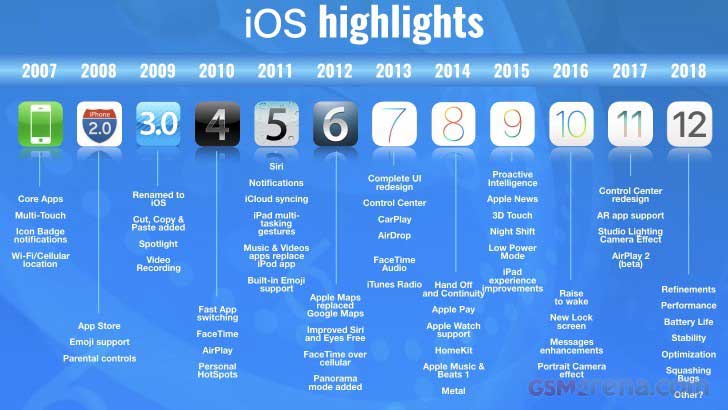
This is just the glorious beginning of iOS, while it holds a ton of excited surprising features for the upcoming future, which will also give the proud figures to the iOS app development industry in upcoming days, just like it already delivering since its innovation.
So if you are planning to develop a brand new and feature worthy mobile application for the iOS app development platform, then do not hesitate to reach us. As we, the team perfection geeks are lovingly waiting to assist you with our classy and error-free iPhone development services.
Related articles
-
Share
-
Comment
Like

Shrey Bhardwaj is a Founder and Director of PerfectionGeeks Technologies. He stands at the forefront of the advanced technology industry trend. He has spent the past 8 years evangelizing an industry-wide shift to the digital world and has helped position PerfectionGeeks Technologies as a leader in the public space. Shrey embraces the core values of innovation, integrity, and growth. He has been highly acclaimed in strategic partner relationship development. Take a look at the skills he adores which makes him the best in the business:
- CCNA
- CCNP
- CCSP
- Development
- Blockchain
He being a blockchain and microprocessor engineer has helped PerfectionGeeks Technologies get a reputed space among the audience. With 8 years at the back, Shrey has built a reputation for developing high-class business strategies, infusing new business models, and developing out channel programs. He is managing and developing a profitable business model for high-end enterprise services which can lead to even bigger growth opportunities. There is nothing stopping him from achieving the impossibles and that too smartly!
